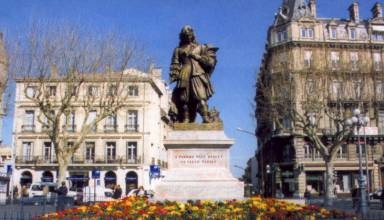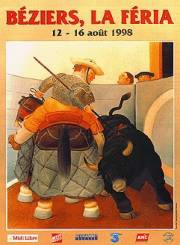In 1209, during his crusade against the
Albigensians, Simon de Montfort burned the Cathedral to the ground together with 30,000 of the Beziers population who were sheltering inside. The City did not recover from this disaster until the 19th C. when it recovered its wealth from wine production. Beziers was already a thriving city when the Romans arrived in about 35 B.C. It still perches in the same location as in those days, on a plateau overlooking the River Orb.


